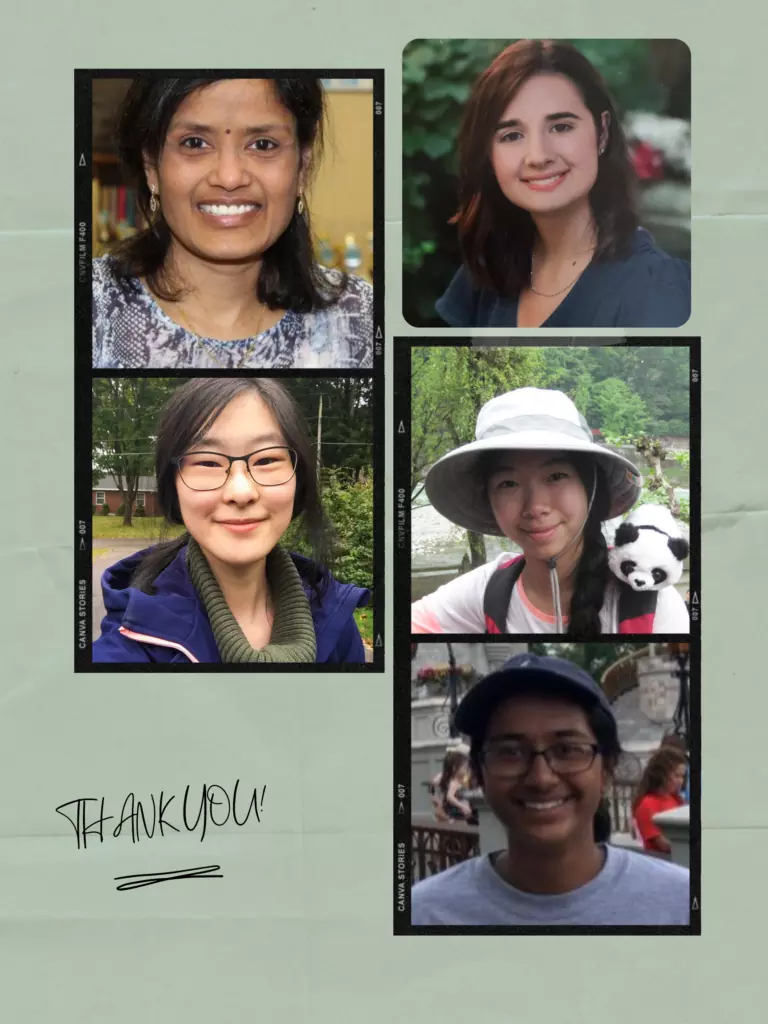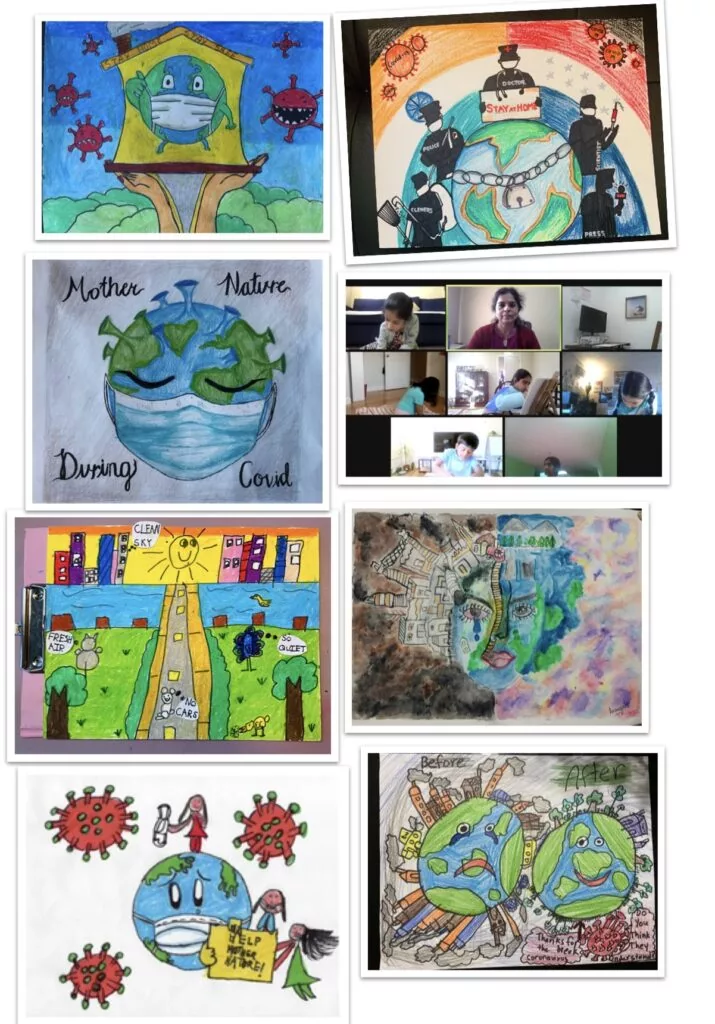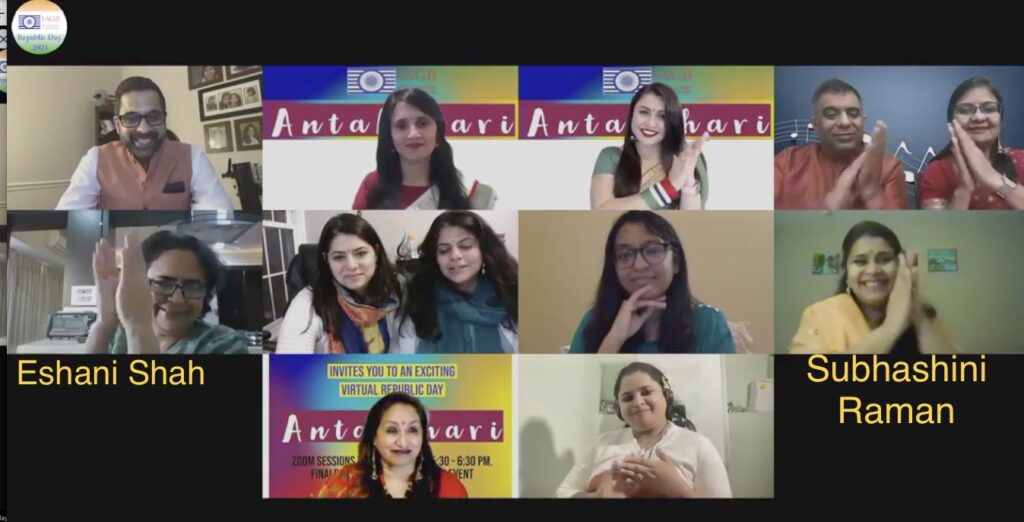Newsletter May 2021
Newsletter Posts

IAGB SPOTLIGHT on Dr. Sanjay Aurora
IAGB is pleased to shine this month’s SPOTLIGHT on Dr. Sanjay Aurora, Neonatologist, Mass General Brigham. Dr. Aurora is very active in community service and has been a champion in volunteering his services during these trying pandemic time both here locally and in helping organize sending help to India. Dr. Aurora also teaches Hindi and Social Studies at Shishu Bharati and with his wife Dr. Natasha Shah Aurora have been foster parents for many children in the community for the past three years.

Dr. Aurora: I went to Jawaharlal Institute of Postgraduate Medical Education & Research (JIPMER), Pondicherry for my Medical School. JIPMER is central government run medical school and is one of the premier medical training institutions in India. After graduation I went to United Kingdom to continue my Pediatric Training at University of Glasgow and then to Boston for my Neonatology subspeciality training. I attended Harvard Medical for my Fellowship in Neonatology and I also earned my master’s in public health at Harvard. So simply put I am a pediatrician and then super specialized into Neonatology. I care for sick babies. Presently I am Associate Professor (faculty) at University of Massachusetts Medical school and my clinical role is through Mass General Brigham. I direct a Level 2 (secondary care) Neonatal unit and associate direct a Level 3 (Tertiary care) Neonatal unit for Mass General.
IAGB: What has been your prior volunteering experience as a Doctor?
Dr. Aurora: The field I have chosen is strongly tied in with service. We have done work in rural public health centers to assist with health care needs starting in medical school. More recently my volunteer services have been more in-line with pediatric care as that is my specialty. Both me and my wife, Natasha who is also a physician have sought out ways we could be of help to the community beyond our daily workload.
IAGB: During this current Covid crisis how has your volunteering taken shape?
Dr. Aurora: Covid crisis has impacted everyone all over the world. Initially we heard the ‘call for help’ when the vaccine trials began. We were alarmed by the negative and pessimistic stories coming out about the viability of vaccines, so my wife and I were able to sign up for the vaccine trials. Of course, at that time we were not aware if we were getting the vaccine or the placebo, but we were confident about the science and wanted to do our part to win this war against the virus. Additionally, I was in communication with other professionals in my field both here and in India and relayed my experience primarily to dispel the fears of vaccine hesitancy. Hopefully we were able to prevent some vaccine hesitancy.
All through this pandemic, I tapped into my network of physicians whenever matters became alarming, the most recent Covid Wave in India for example. I stayed connected and supported various organizations here and in India and helped raise funds. These include excellent organizations like America India Foundation, Sewa Foundation, JIPMER one of my alma mater, Indian Medical Association of New England (IMANE), Arogyaseva of Ekal Foundation, American Association of Physicians of Indian American Origin (AAPI) to name a few. Each of these organizations has done tremendous work in helping India during its most severe crisis. In JIPMER the alumni have helped start a new 140 bed ICU Covid treatment unit, we donated ventilators, monitors and supplies for the unit. We have also raised funds for 200 oxygen concentrators to armed forces in India. Indian Armed forces are going into the rural centers of India to assist with covid relief. Separately through another organization we helped send 5,000 oxygen concentrators to India. Through Arogyaseva we could also directly donate help to specific families suffering from Covid in India. Of course, I was very happy to join IAGB in their Chale chalo fundraising effort for the same reason and help them with their vaccine camp that they partnered with IMANE. But frankly much more help is needed. What we are doing is just a drop in the bucket. So would like to call out to all your readers and members to do more in every and any way they can to help win this war over the pandemic. People can reach out to any of the organizations I mentioned above or more such like Indian Red Cross, Navya Foundation, Uday Foundation, Khalsa Aid, Desai Foundation, UNICEF to name a few.
IAGB: How did you join the ranks of volunteers who helped administer giving the vaccine shots post Emergency Use Authorization by FDA of vaccines in US?
Dr. Aurora: We first heard a call from EMT for help with administering the vaccine into the arms of people. Our first stint was in Haverhill. As we realized this help will be needed for some more time, I informed my Chief Medical Officer about my availability during my off hours and me and Natasha have been volunteering for this service for past few months, giving vaccine to all ages and backgrounds.. We have also done through IMANE which also has done tremendous work during this time along with IAGB.
IAGB: Do you have any connections with medical personnel in India and how has that helped in your efforts to send help?
Dr. Aurora: One of my cousins is the chief virologist for the State of Rajasthan. She runs the testing for the entire state. Plus, I have lots of friends from JIPMER who are now spread out across India and are doing lots of great work during these times. I call out a colleague of mine Dr. Naveen who is doing tremendous work running a charity hospital for COVID patients. The MLL hospital In Chittoor district, where Boeing and Azim Premji donated oxygen units to make their own local oxygen as they were running out of oxygen supplies faster than they were getting the replenishments. I am in touch with many of these doctors and assisting them as needed.
IAGB: How and why did you choose to become foster parents?
Dr. Aurora: It started about 2 – 3 years ago. We started noticing on a regular basis that because of various reasons the mothers or dads are not able to take care of their children. Most of the times because the parent(s) is (are) in the hospital and its not safe for the kids to go home by themselves. Presently this is a major crisis issue in MA, and it has become more severe during the covid crisis. The social services are not finding foster parents to take care of these kids. So, we volunteered to do this. We have had kids starting at age 3 days old to older kids. Kids stay with us sometimes for few days to a week till their family situation gets sorted out. During their stay we are their parents.
IAGB: If our readers are interested to become foster parents how do they go about it?
Dr. Aurora: I would be glad to talk to anyone and answer any questions if they are interested in pursuing this line of community service. If anyone is interested, you should contact your local department of Children, and Families (DCF). They are always looking for help. There will be a background check and some basic training is needed before you become foster parents. If you connect with me, I will gladly guide you through the steps.
IAGB: What can you share with us about your other teaching role at Shishu Bharati?
Dr. Aurora: Shishu Bharati is a way of having kids connect with their heritage plus I believe that learning a new language is always a good idea. I have been teaching Hindi and Social Studies at the Lexington branch of Shishu Bharati for last fifteen years. Kids from Kindergarten to 8th grade are part of the student body. They have three centers – in Norwood, Lexington, and Nashua. I am a pediatrician and an educator in my professional life, so I like to engage with kids and this was another way to give back to the community.
IAGB: What are your hobbies?
Dr. Aurora: Staying active is good for your mind and body. I enjoy many sports but particularly I love golfing, biking, tennis, skiing and snowboarding. Each of these sports has a different social construct and each has its own challenges. Most of the time I am competing against myself in trying to improve my fitness and skills. Of course, playing golf when the weather is good adds to my social interactions which I enjoy.
– Sanjay Kudrimoti
Youth Opportunities
This is the youth opportunities column! Parents, please do consider highlighting the following opportunities to your children!
Editorial Club:
Who: 7th to 10th grade (but open to others who may be interested as well)
When: Starts June 18 with 5 weekly sessions
Sign up form: https://forms.gle/EqJoudBKhmzXjf3p8
Parents, do consider asking your child if they are interested in participating in the Editorial Club! This summer group, run by the high school students of the Metrowest branch of the Alliance of Youth Leaders in the United States (AYLUS), was created to promote critical thinking and strong writing skills.
Through 5 sessions, each an hour in length, the club will discuss and analyze op-ed articles on a variety of topics (history, science, literature, etc.). For the younger students, working on developing these analysis skills is one of the best ways to begin preparing for their SATs and ACTs, and they are also useful for many humanities and science-based careers! Supplementary webinars focusing on specific themes may also be offered.
It starts on June 18th, and you can sign your child up by filling out the form linked above. Please email aylusmetrowest@gmail.com with any questions.
Onora’s Social Impact Entrepreneur Fellowship
Who: High school students
When: June 21 – August 1
To register: Send a brief email to team@onoraglobal.com with:
- Your name
- Your grade
- Your school
- State
- Why you’re interested in the Fellowship
- How you heard about the Fellowship
- Any other questions
The Fellowship brings together bright minds from around the country to help mobilize climate action around the world. They meet weekly over the course of one month, and students will learn about, brainstorm, and test ways to help people take climate action and systematically influence a better future in the process. More than ten trees will be planted for each fellowship student for helping make the world a better place!
Upon completing the Fellowship, students are invited to join Onora’s growing Student Advisory Committee. Here, you’ll get to continue weighing in on the future of Onora and how they advance their mission of making climate conscious education and planet healing action easily accessible to everyone.
More details and sign ups for the Fellowship can be found here: https://www.onoraglobal.com/students/fellowship.
May IAGB 2021 Youth Directorial Column
Typically, at this time of the school year, students start to feel the excitement of summer. However, though the weather is beautiful, and we are feeling the impatience of the end of the school year, we are still in the thick of final projects and exams. It is a stressful time, yet a few more weeks is all that is left of this school year! For this month, I have decided to spotlight nature’s palette through locally taken pictures to encourage students to continue to find moments of relaxation even amongst the stress.







~ IAGB Youth Editorial Director, Aarushi Pant
May IAGB 2021 Youth of the Month

~ IAGB Youth Editorial Director, Aarushi Pant
Director’s Corner – Memorial Day

The tradition of Memorial Day has roots starting after the end of Civil war. Originally this day was known as the Decoration Day. This day became a federal holiday starting in 1917.
America’s Civil War of 1860s had claimed the greatest number of lives of all conflicts in U.S. history. While communities started organizing memorial gatherings during the Spring of every year, officially the federal government recognized Waterloo, New York as the birthplace of Memorial Day in 1966. On May 5th, 1866, Waterloo started an annual event when all businesses where closed and residents decorated the graves of soldiers with flowers and flags.
After World War I Decoration Day evolved into Memorial Day, to commemorate American Military personnel who died in all wars. Since then, America has been in the theater of war in World War II, the Vietnam War, The Korean War and more recently in Afghanistan and Iraq and few others.
In 1968, Congress passed the Uniform Monday Holiday Act, which established Memorial Day as the last Monday in May in order to create a three-day weekend for federal employees. The change went into effect in 1971. The same law also declared Memorial Day a federal holiday.
Everyone probably associates the 24-note tune distinctive bugle melody with Memorial Day Commemoration known as – Taps,” The lights-out” signal to soldiers at night, date back to the American Civil War.
In July 1862, U.S. General Daniel Butterfield and his brigade were camped at Harrison’s Landing, Virginia, recuperating after the Seven Days Battles near Richmond. Dissatisfied with the standard bugle call employed by the Army to indicate to troops it was time to go to sleep, and thinking the call should sound more melodious, Butterfield reworked an existing bugle call used to signal the end of the day. After he had his brigade bugler, Private Oliver Wilcox Norton, play it for the men, buglers from other units became interested in the 24-note tune and it quickly spread throughout the Army, and even caught on with the Confederates.
India commemorates Remembrance Day annually on November 11. On this day, the Allied powers signed a ceasefire agreement with Germany at Rethondes, France, at 11:00 a.m. on November 11, 1918, thus bringing the World War I to an end. Since that time many of the places then colonized by Great Britain commemorate Remembrance Day.
This Memorial Day, IAGB joins millions of Americans in horning the memory of fallen!
– Sanjay Kudrimoti
Don’t search for Heaven because it’s here in Leh!

I was so eager to go that I went straight to my husband and said to him that our next vacation will be Leh, Ladakh. He was amused by my suggestion!
The best time to visit Leh is June to September. It’s very cold in the winter months. So we decided that June will be the most appropriate time. We carefully planned our itinerary and were so excited for this new adventure. Both me and my husband are trekkers at heart and enjoy trying out new adventurous destinations. This time with two young children it seemed slightly challenging, but who could stop us!!
We planned our 5-day long trip to Leh and trust me it was one of the beautiful and appropriate time to visit the place. We already had heard a lot about the beauty of Leh and our expectations were quite high, so we were all set to depart for Leh.

Leh & Ladakh, situated amidst the Great Himalayas and the Karakoram ranges in the scenic state of Jammu and Kashmir, are two of the most spectacular places in the world where scores of tourists from across the globe throng annually.
Once you reach Leh, it is advised to take rest for some time, as this will help your body to acclimatize to the climatic conditions. There is a relative lack of oxygen in this place being 3000 meters above sea level. Even though the magnetic beauty of this place will not let you rest. The only possible way out for all the curious and impatient people like me, who can’t resist themselves from exploring the place is that they check out some local attractions or can visit the local Leh market which I did, while my family rested in the hotel. The hotel staff were warm and so welcoming, they cooked us delicious home cooked delicacies at the lunch buffet.



After a long tiring day, we spent the night listening to melodious Ladakhi (native Ladakh language) songs sung by our hotel staff.



After returning from the lake, the altitude sickness drastically reduced, and we felt much better.


-Prerna Mathur






















 “The aim of art is not to represent the outside appearance of things but their inward significance.” – Aristotle
“The aim of art is not to represent the outside appearance of things but their inward significance.” – Aristotle

 For sheer geographical diversity, few places in the world are as richly endowed as Himachal Pradesh. Low rolling hills just a couple of hundred meters above sea lev
For sheer geographical diversity, few places in the world are as richly endowed as Himachal Pradesh. Low rolling hills just a couple of hundred meters above sea lev
 There are many attractions on the way to Rampur Bushahr from Shimla such as the snow skiing spot of Narkanda, Hatu Temple at an altitude of 14000 feet, apple orchard of the Kotgarh belt, and the scenic Satluj Valley, and more. From historical places to the temple villages there’s a lot to see and to do here. Ancient Bhimakali Temple at Sarahan which is 45 km away from Rampur Bushahr is a very famous and main attraction in the region.
There are many attractions on the way to Rampur Bushahr from Shimla such as the snow skiing spot of Narkanda, Hatu Temple at an altitude of 14000 feet, apple orchard of the Kotgarh belt, and the scenic Satluj Valley, and more. From historical places to the temple villages there’s a lot to see and to do here. Ancient Bhimakali Temple at Sarahan which is 45 km away from Rampur Bushahr is a very famous and main attraction in the region.
